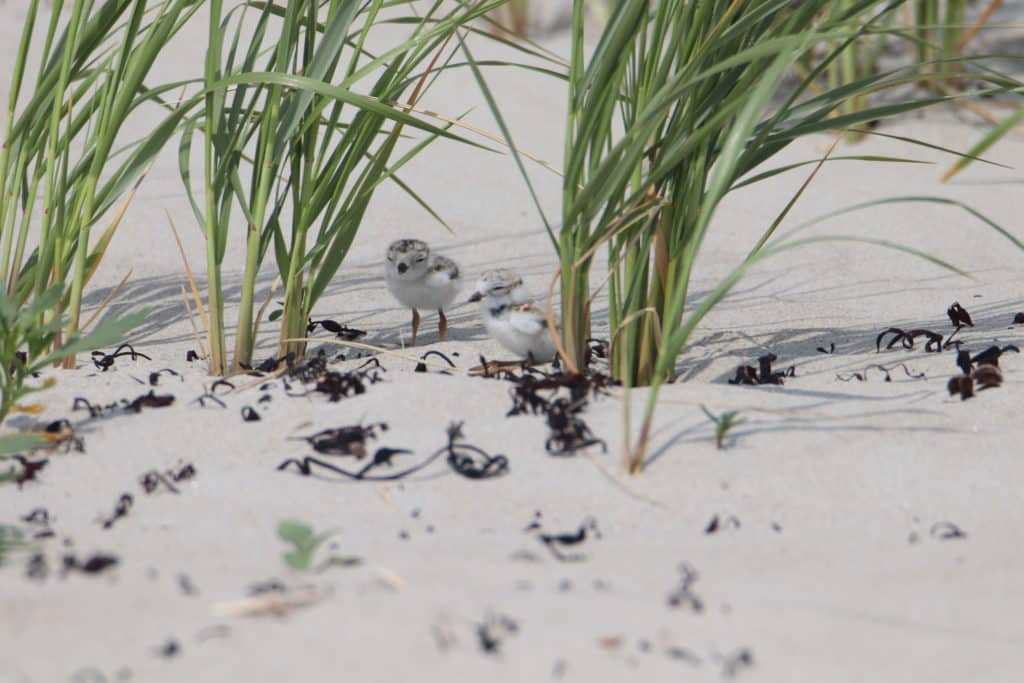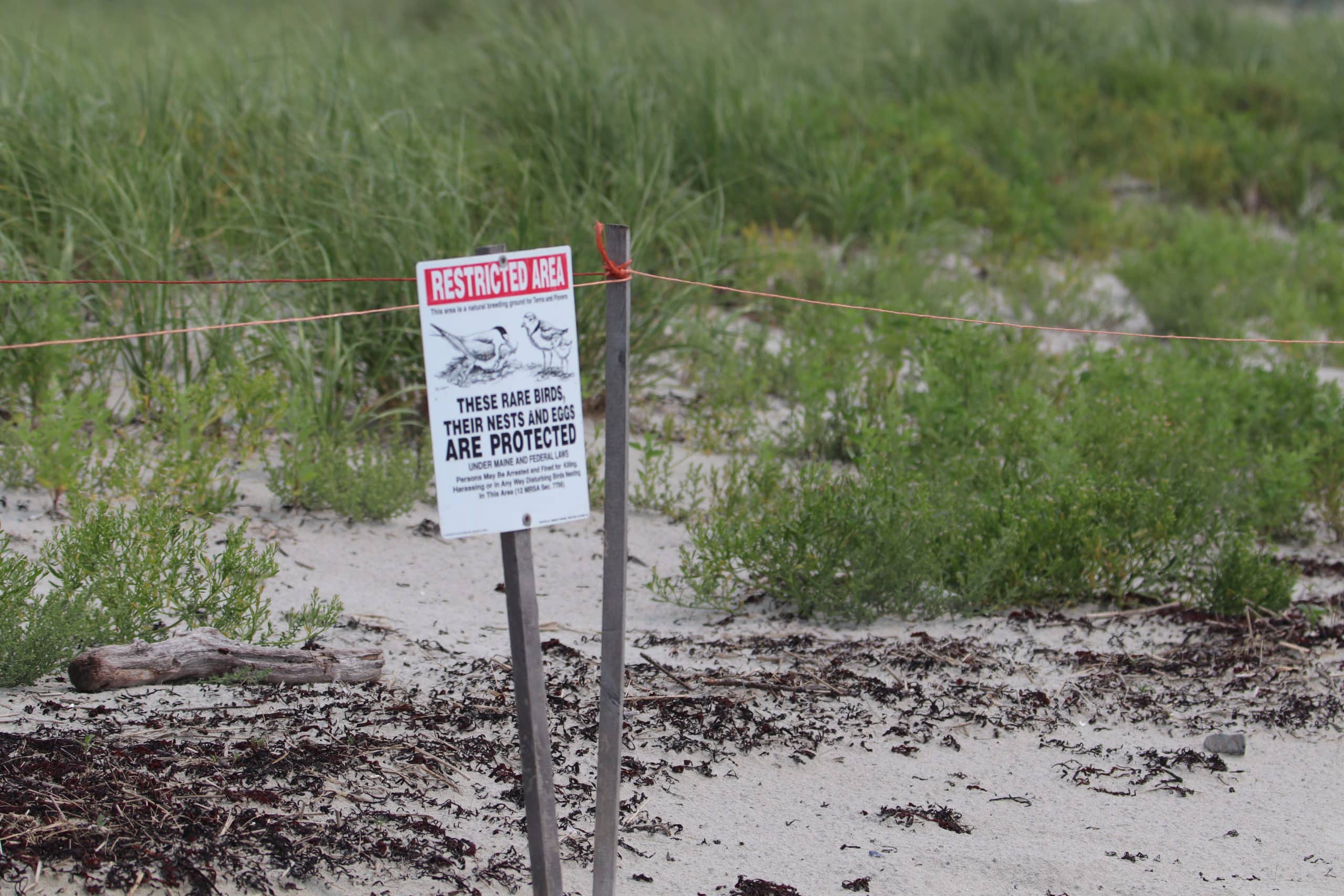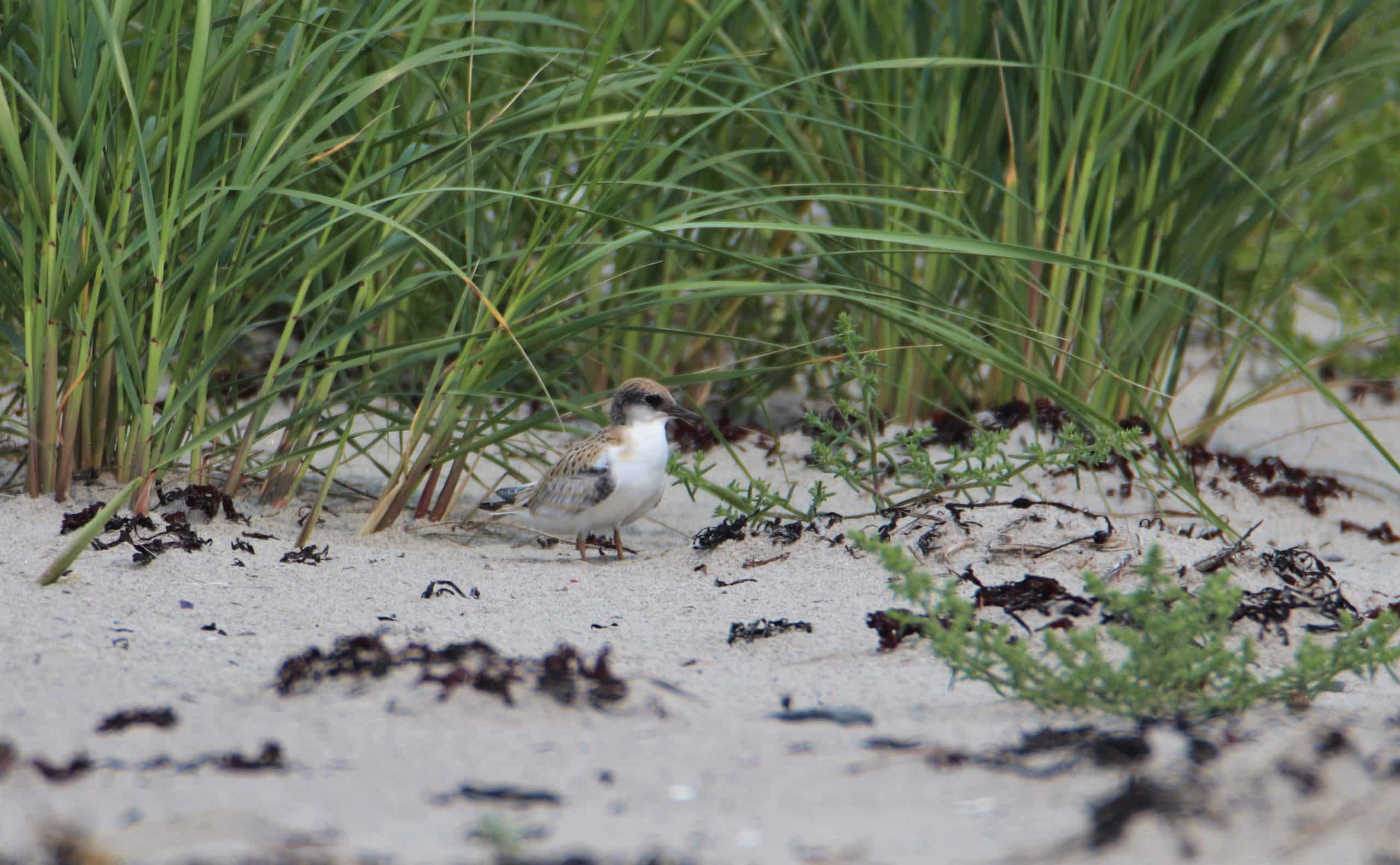
I recently was surveying for some of the last piping plover chicks of the season on Old Orchard Beach when a woman approached me, pointing to the bright green runners of beach grass at my feet. “What type of grass is that?”, she asked to which I replied, “dune grass”, caught off guard by such a simple yet increasingly relevant question. Looking back on this interaction, I couldn’t help but think of the many different answers to her question.
Dune grass is essential habitat, defined by the Maine Department of Inland Fisheries and Wildlife as an “area that currently or historically provides physical or biological features essential to the conservation of an endangered or threatened species in Maine, and which may require special management considerations” (12 MRSA, Chapter 925, Subchapter 3, Sections 12804 and 12806). For endangered piping plovers and least terns, dune grass habitat is vital for these birds to breed, nest, and brood their young. Restoring healthy dune grass ecosystems is a prerequisite to helping endangered shorebird populations rebound, and fencing off these areas early in the breeding season is often key to their overall success.

Besides its essential habitat designation, dune grass ecosystems are fundamental to building coastal resilience by combating beach erosion and protecting waterfront infrastructure from the impacts of sea-level rise. Dune grass has specialized roots called; rhizomes that grow horizontally across the sand, creating a complex network that stabilizes the sand dune. This process of re-nourishing the ecosystem by retaining sand allows other coastal vegetation to colonize the area. Added biodiversity only strengthens resilience to storm surge and flooding while creating the ideal nesting environment for piping plovers and least terns.

Any attempt to remove vegetation from the dune, including walking or raking over dune grass, directly compromises overall structure and stability in the dune ecosystem. As the first line of defense against sea-level rise in the Gulf of Maine, coastal sand dunes are essential habitat for reasons much greater than the birds!
